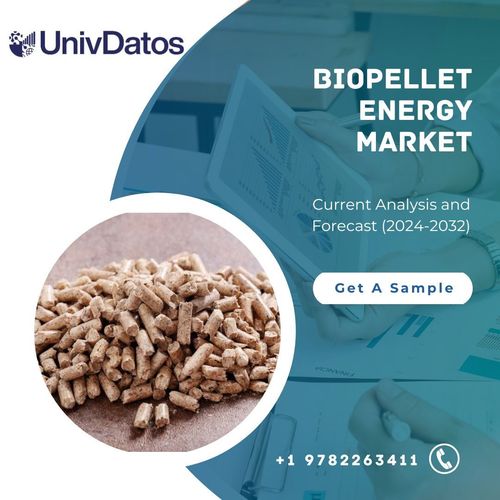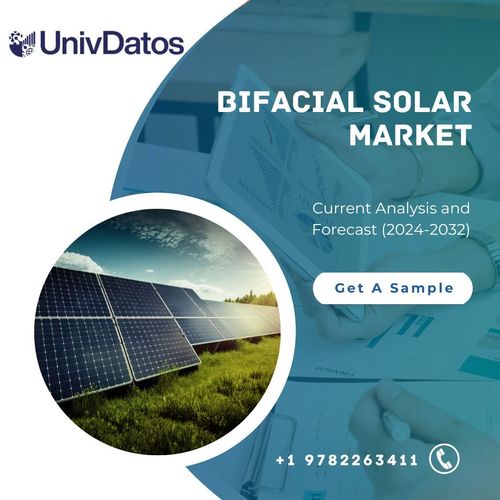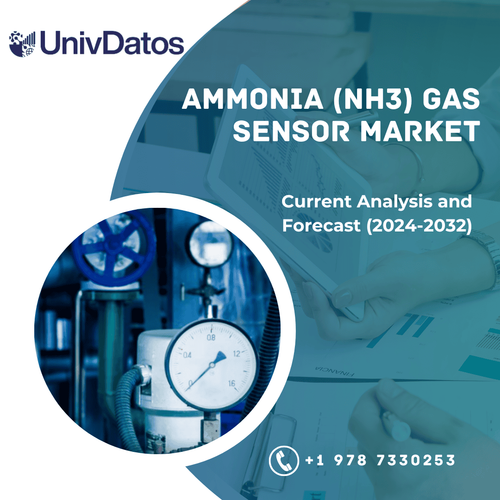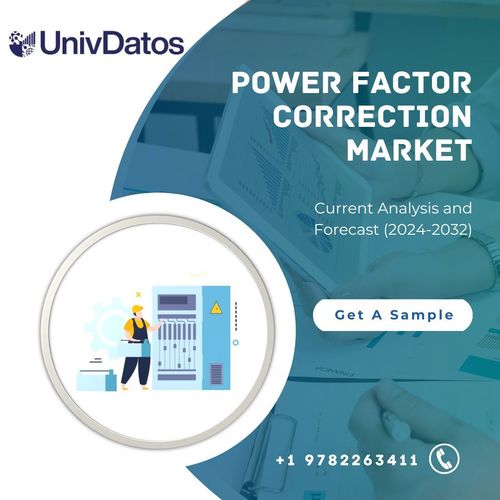Solar Paint Market: Current Analysis and Forecast (2023-2030)
Emphasis on Technology (Hydrogen-Producing Solar Paint, Quantum Dot Solar Cells (Photovoltaic Paint), and Perovskite Solar Paint); Application (Walls, Floors, and Others); and Region/Country
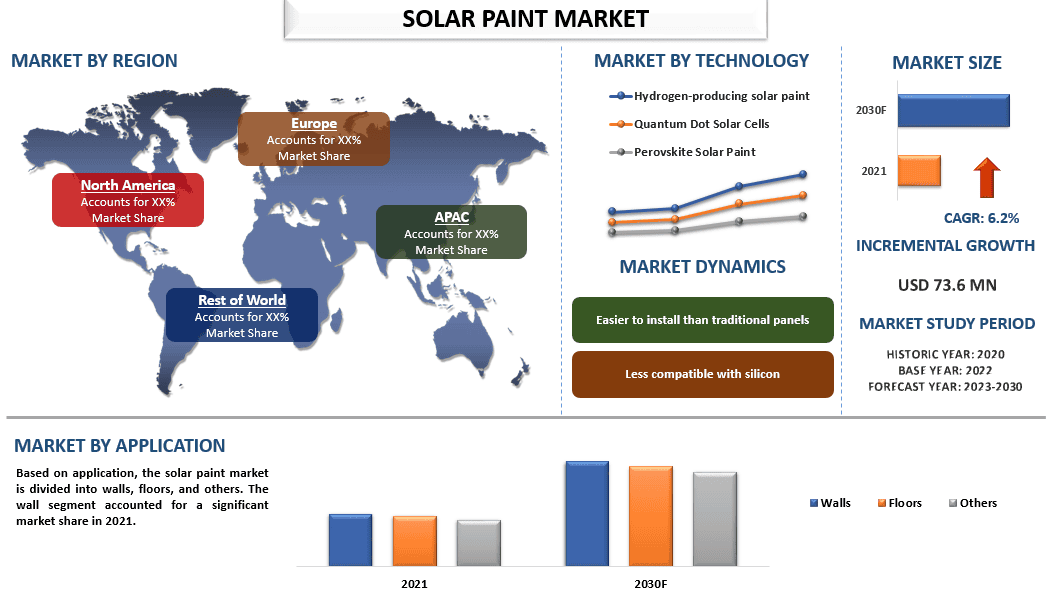
Solar Paint market was valued at USD 73.6 million in 2021 & is expected to grow at a CAGR of 6.2% from 2023-2030. Solar Paint is a liquid with photovoltaic properties that allows it to absorb sunlight and convert it into electricity. Paint it on a piece of glass or other surface that has circuitry attached, and you have your own solar cells. Its main virtue is its versatility. In addition, Solar paint is a new technology that mixes solar cells with liquid to generate electricity. Most solar paint prototypes contain liquids with photovoltaic properties, meaning they produce an electric current when exposed to light. Factors such as the increasing demand for solar energy along with the continuous usage by researchers using alternative & cheaper substances. Major researchers in the market are working towards the development of Solar Paint with technologically advanced features. For instance, in Sep 2022, according to research by Australia’s Royal Melbourne Institute of Technology (RMIT), scientists created solar paint that can generate electricity. A photon-absorbing film in which nanoscale semiconductors are integrated, this paint, sprayed on any type of surface (roof, garden furniture, walls), could deliver greater light absorption.
Republic Of Solar, Berger Blog, BUILT CONSTRUCTIONS, Onyx Solar Group LLC, Solar Energy Corporation, SolOr, and Endeavour Homes are some of the key players in the market. Several M&As along with partnerships have been undertaken by these players to facilitate customers with hi-tech and innovative products/technologies.
Insights Presented in the Report
“Amongst technology, hydrogen-producing solar paint segment accounted for a significant market share in 2021”
Based on technology, the solar paint market is segmented into hydrogen-producing solar paint, quantum dot solar cells (photovoltaic paint), and perovskite solar paint. The hydrogen-producing solar paint segment accounted for a significant market share in 2021. Hydrogen is considered one of the cleanest fuel sources. To enhance its generation the use of Hydrogen-producing solar paint is made. Creation of electricity from water vapor by taking moisture from the air, which further help of sunlight to separate the oxygen and hydrogen within the water molecules. After the separation of hydrogen, clean energy is then produced.
“Amongst application, wall segment accounted for a significant market share in 2021”
Based on application, the solar paint market is divided into walls, floors, and others. The wall segment accounted for a significant market share in 2021. Solar Paint is applied because it is a cost-effective and efficient way to harness solar energy. By using a specialized type of paint, it is possible to convert sunlight into electricity and use it to power homes and buildings. This makes it a versatile option for those looking to generate renewable energy.
“APAC is anticipated to grow at a substantial CAGR during the forecast period”
In 2021, APAC is anticipated to grow at a substantial CAGR during the forecast period. This is mainly due to the economies of many APAC countries growing rapidly, leading to increased demand for energy and higher electricity costs. Solar paint is seen as a cost-effective and efficient way to generate solar power, making it an attractive option for businesses and households looking to reduce their energy costs. Furthermore, Many APAC governments are supporting the development of renewable energy technologies, including solar power. This has created a favorable policy environment for solar paint, making it easier for companies to develop and market their products in the region. Solar paint is used to increase energy efficiency and lower the cost of electricity. Businesses and individuals will be able to reduce their reliance on fossil fuels while reducing energy consumption, thanks to the direct production of electricity using solar energy instead of a centralized power grid. Thus, such factors are increasing the demand for solar paint in the APAC Region.
Solar Paint Market Report Coverage
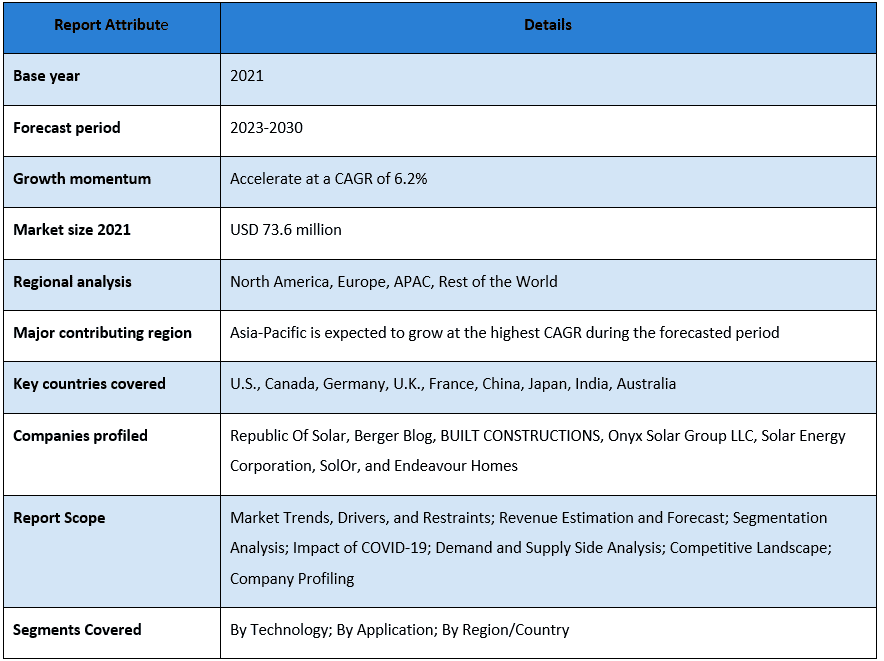
Reasons to buy this report:
- The study includes market sizing and forecasting analysis validated by authenticated key industry experts.
- The report presents a quick review of overall industry performance at one glance.
- The report covers an in-depth analysis of prominent industry peers with a primary focus on key business financials, product portfolios, expansion strategies, and recent developments.
- Detailed examination of drivers, restraints, key trends, and opportunities prevailing in the industry.
- The study comprehensively covers the market across different segments.
- Deep dive regional level analysis of the industry.
Customization Options:
The global solar paint market can further be customized as per the requirement or any other market segment. Besides this, UMI understands that you may have your own business needs, hence feel free to connect with us to get a report that completely suits your requirements.
Table of Contents
Research Methodology for the Solar Paint Market Analysis (2023-2030)
Analyzing the historical market, estimating the current market, and forecasting the future market of the global solar paint market were the three major steps undertaken to create and analyze the adoption of solar paint in major regions globally. Exhaustive secondary research was conducted to collect the historical market numbers and estimate the current market size. Secondly, to validate these insights, numerous findings and assumptions were taken into consideration. Moreover, exhaustive primary interviews were also conducted, with industry experts across the value chain of the global solar paint market. Post assumption and validation of market numbers through primary interviews, we employed a top-down/bottom-up approach to forecasting the complete market size. Thereafter, market breakdown and data triangulation methods were adopted to estimate and analyze the market size of segments and sub-segments of the industry pertains to. Detailed methodology is explained below:
Analysis of Historical Market Size
Step 1: In-Depth Study of Secondary Sources:
Detail secondary study was conducted to obtain the historical market size of the solar paint market through company internal sources such as annual reports & financial statements, performance presentations, press releases, etc., and external sources including journals, news & articles, government publications, competitor publications, sector reports, third-party database, and other credible publications.
Step 2: Market Segmentation:
After obtaining the historical market size of the solar paint market, we conducted a detailed secondary analysis to gather historical market insights and share for different segments & sub-segments for major regions. Major segments are included in the report as technology and application. Further country-level analyses were conducted to evaluate the overall adoption of testing models in that region.
Step 3: Factor Analysis:
After acquiring the historical market size of different segments and sub-segments, we conducted a detailed factor analysis to estimate the current market size of the solar paint market. Further, we conducted factor analysis using dependent and independent variables such as various technology and application of solar paint. A thorough analysis was conducted for demand and supply-side scenarios considering top partnerships, mergers and acquisitions, business expansion, and product launches in the solar paint market sector across the globe.
Current Market Size Estimate & Forecast
Current Market Sizing: Based on actionable insights from the above 3 steps, we arrived at the current market size, key players in the global solar paint market, and market shares of the segments. All the required percentage shares split, and market breakdowns were determined using the above-mentioned secondary approach and were verified through primary interviews.
Estimation & Forecasting: For market estimation and forecast, weights were assigned to different factors including drivers & trends, restraints, and opportunities available for the stakeholders. After analyzing these factors, relevant forecasting techniques i.e., the top-down/bottom-up approach were applied to arrive at the market forecast for 2030 for different segments and sub-segments across the major markets globally. The research methodology adopted to estimate the market size encompasses:
- The industry’s market size, in terms of revenue (USD) and the adoption rate of the solar paint market across the major markets domestically
- All percentage shares, splits, and breakdowns of market segments and sub-segments
- Key players in the global solar paint market in terms of products offered. Also, the growth strategies adopted by these players to compete in the fast-growing market
Market Size and Share Validation
Primary Research: In-depth interviews were conducted with the Key Opinion Leaders (KOLs) including Top Level Executives (CXO/VPs, Sales Head, Marketing Head, Operational Head, Regional Head, Country Head, etc.) across major regions. Primary research findings were then summarized, and statistical analysis was performed to prove the stated hypothesis. Inputs from primary research were consolidated with secondary findings, hence turning information into actionable insights.
Split of Primary Participants in Different Regions
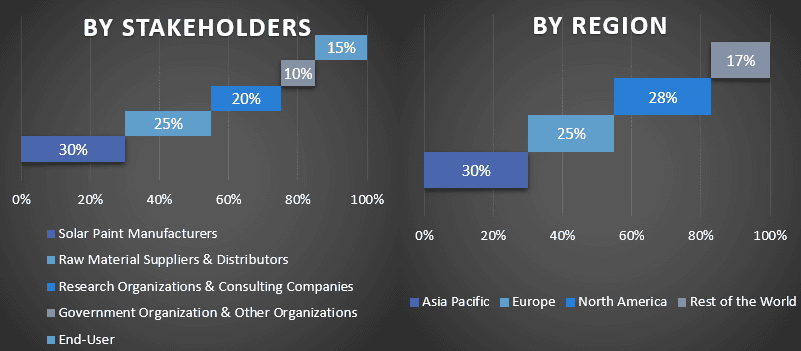
Market Engineering
The data triangulation technique was employed to complete the overall market estimation and to arrive at precise statistical numbers for each segment and sub-segment of the global solar paint market. Data was split into several segments & sub-segments post studying various parameters and trends in the areas of technology and application in the global solar paint market.
The main objective of the Global Solar Paint Market Study
The current & future market trends of the global solar paint market were pinpointed in the study. Investors can gain strategic insights to base their discretion for investments on the qualitative and quantitative analysis performed in the study. Current and future market trends determined the overall attractiveness of the market at a regional level, providing a platform for the industrial participant to exploit the untapped market to benefit from a first-mover advantage. Other quantitative goals of the studies include:
- Analyze the current and forecast market size of the solar paint market in terms of value (USD). Also, analyze the current and forecast market size of different segments and sub-segments
- Segments in the study include areas of technology and application.
- Define and analysis of the regulatory framework for the solar paint
- Analyze the value chain involved with the presence of various intermediaries, along with analyzing customer and competitor behaviors of the industry.
- Analyze the current and forecast market size of the solar paint market for the major region.
- Major countries of regions studied in the report include Asia Pacific, Europe, North America, and the Rest of the World.
- Company profiles of the solar paint market and the growth strategies adopted by the market players to sustain in the fast-growing market
- Deep dive regional level analysis of the industry
Related Reports
Customers who bought this item also bought

